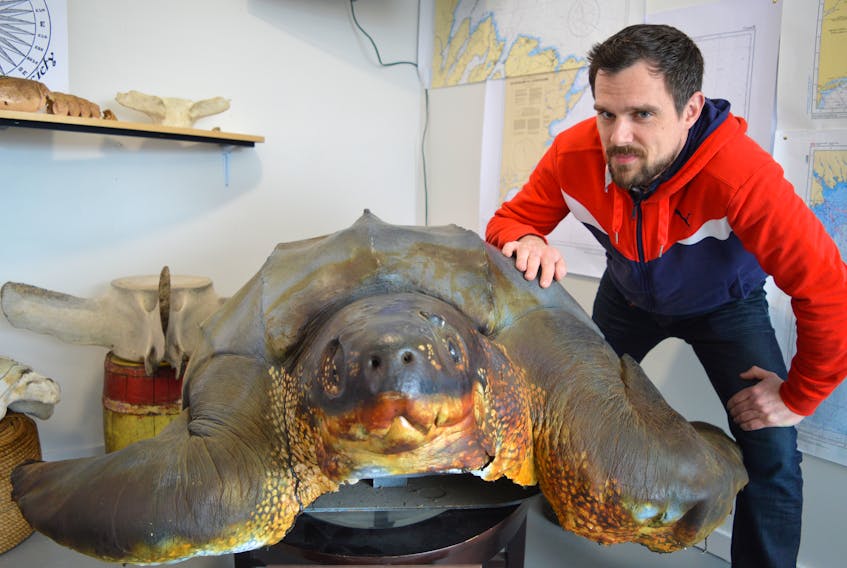For several Halifax regional councillors, it was show-and-tell time with a leatherback sea turtle Thursday afternoon.
Kathleen Martin, the executive director of the Canadian Sea Turtle Network, was doing the showing, including real pieces of the gigantic turtle’s downward curving spines (papillae) from their mouth and throat that help them to capture and swallow prey. Martin also had photos of the leatherback’s feeding habits, its stomach content and its feces.
And an impassioned Martin told the five councillors who are part of the environment sustainability committee that it’s time for the city to ban plastic bags in an effort to save the endangered leatherbacks.
“Leatherbacks are visual predators,” Martin said, and their primary prey is jellyfish. She said research shows that the leatherback, dealing with the sun’s refraction off the ocean water, can have difficulty differentiating plastics from jellyfish.
“When they are floating in the water, how different does a jellyfish look from a plastic bag? The number of leatherbacks that have been opened up and found to have plastics in their stomachs is almost 40 per cent.”
A solution is to keep plastics out of the ocean. Banning them in the city would be a good start, she said.
After a long January debate about banning plasticbags, council directed solid waste manager MattKeliher and municipal staff to come back to
the environment committee within a year with a report about the possibility of of eliminating or reducing single-use bags and to look at extended producer responsibility (EPR) for plastic grocery bags.
Part of that debate focused on whether a plastic ban should be the city’s call or the province’s.
Martin said it’s time to put that argument to rest.
“Sometimes, you’re the leader because you can be the leader,” she said. “This is something that needs to be done. HRM can do it. You can do it quickly and efficiently. The province will absolutely follow you.”
She said there are environmental, social and economic benefits associated with taking charge.
“The environmental movement is incredibly attractive to young people. If you want to keep them in this province, in this city, walk the walk. Show them exactly what you do and that you are willing to do the hard things.
“History shows the first brand maintains twice the long-term market share of the No. 2 brand. The province will follow you. This will resonate with people, tourists, with people deciding where they want to live, where they want to raise their families and open their businesses. You want to be first and you guys can make that change.”
Coun. Tony Mancini, the environment committee chairman, said people will always make the argument for the convenience of the plastic bag.
“We have to all be willing to be inconvenienced,” Martin said. “This is low-hanging fruit, to get rid of plastic bags.”
Martin weaved an interesting tale about the great leatherback, explaining that it has existed for more than 150 million years.
“When T. Rex roamed the earth, leatherback sea turtles roamed the water,” she said. They survived millions of years of global change, they were here for the formation of the continents, but today they are endangered worldwide.
The leatherback can grow to be two metres long and routinely weigh more than 1,000 pounds. Leatherback sea turtles nest in tropical climates but the waters off Nova Scotia are an important gathering place for them.
“Leatherbacks come here and they get really, really fat, they come to our waters to get fat off jellyfish,” she said. They are 33 per cent heavier when they are feeding off Nova Scotia than when they have retreated for some time to their tropical nests.
“The turtles ingest plastics,” she said. The plastic will block the intestines of the animal and it can starve to death. The ingested plastics may be entire bags or smaller pieces because the combination of wave action and ultraviolet light in the ocean break the plastics into smaller pieces.
“My preference is to ban all film plastics but that didn’t go over so well,” said Coun. Shawn Cleary. “The idea is that we have to take steps now. . . . I just wish we were going faster.”









